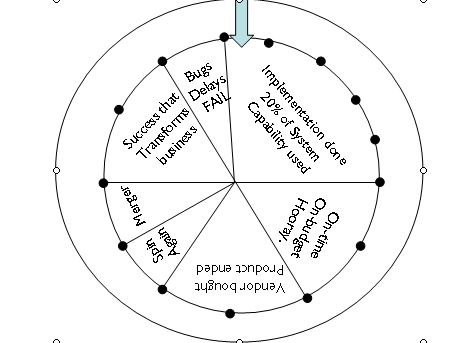First Impressions
I was talking to a friend that works in HR for a fairly large organization about how his group was being temporarily relocated to some makeshift office space (think Trailer Park HR) while the 'proper' HR offices are being remodeled.
As I recalled their HR offices to be fairly normal, a bit non-descript, but certainly not awful, I asked what was the impetus for the remodel, particularly in a time of tight budgets, moderate to zero salary increases, etc. The answer was, 'Our leadership is concerned about the impression that our offices make to candidates and new employees. This is their first impression of us as a place to work, and we need to enhance the experience if we want to be an employer of choice.'
While having a welcoming office, with a pleasant and helpful person at reception, and a comfortable place to sit and wait for an interview are all important, and certainly can support the new employee or candidate experience, they are far, far from being where 'first impressions' are forged I think.Flickr - sammo371
So where are 'first impressions' formed today? Here are just some I came up with, I am sure there are many more
Google searches of the company name, or the 'Company Name Jobs' string - For many candidates, and ones that eventually get hired, this is the very first interaction with your company and brand. Assuming you are not a major consumer brand, or a retail organization that is well known in your local market, Googling the company is Step 1. Have you checked recently to be sure that 'Company Name Sucks' is not on the top of the list for this search?
Corporate Web Site - still relevant, but increasingly less so. Most folks realize that the corporate web site is basically marketing material, and thus maybe only about 10% of the message really sinks in. My view is a really amateur looking corporate site could turn a candidate away, but for the most part it probably is not as important as the actual 'job' or 'career' sections of the site.
Corporate Job Site - important, a bad experience here starts the candidate relationship on the wrong foot, a horrible experience will end the relationship right there. Almost all organizations require applicants to run through an online application process that can vary in unpleasantness from root canal all the way through a day at the spa. Making the candidate experience better is probably 100 times more important than making the tough call of 'eggshell' or 'off-white' for the paint in the HR lobby.
Official presence on major social networks and company blogs - probably not as important in many industries and segments, but for some a very critical source of content and relationship building. Just like every company had to create a website a few years ago, most every company these days has established some kind of social networking presence. But the effectiveness and impact of these efforts varies widely, and not all candidates and new employees care, but in time this will definitely increase.
Unofficial presence on major social networks - Think Facebook pages and groups created by employees and community members, or simply Twitter searches mentioning your company or brand name. Candidates and new employees see these. How important they are is certainly debatable, but how many organizations actually consider the effect on the employer reputation of these activities.
Rating sites - sites like Glassdoor and Vault that contain unvarnished reviews of your company as a place to work from current and former employees. The veracity of these ratings is certainly subject to debate, but the fact is they are out there, and there is some chance that candidates and new employees are reading them way before they get the opportunity to admire that new Ficus tree in the HR reception area.
What their friends say - This is likely more imporant that all the other individual factors above, but certainly is infliuencesd by them all. We trust our friends. We want to find out as much as we can about potential employers. What our friends say about the company is shaped by all the various encounters they have had with the organization in the areas above, and by direct experience. You can't control what people will say about your organization as a place to work, but by honest assessment of your efforts (web, social, community, etc.) you can take steps to influence what is said.
A final thought, the last time someone asked you, 'What is it like to work there?' have you ever mentioned the decor of the HR offices?

 Steve
Steve
